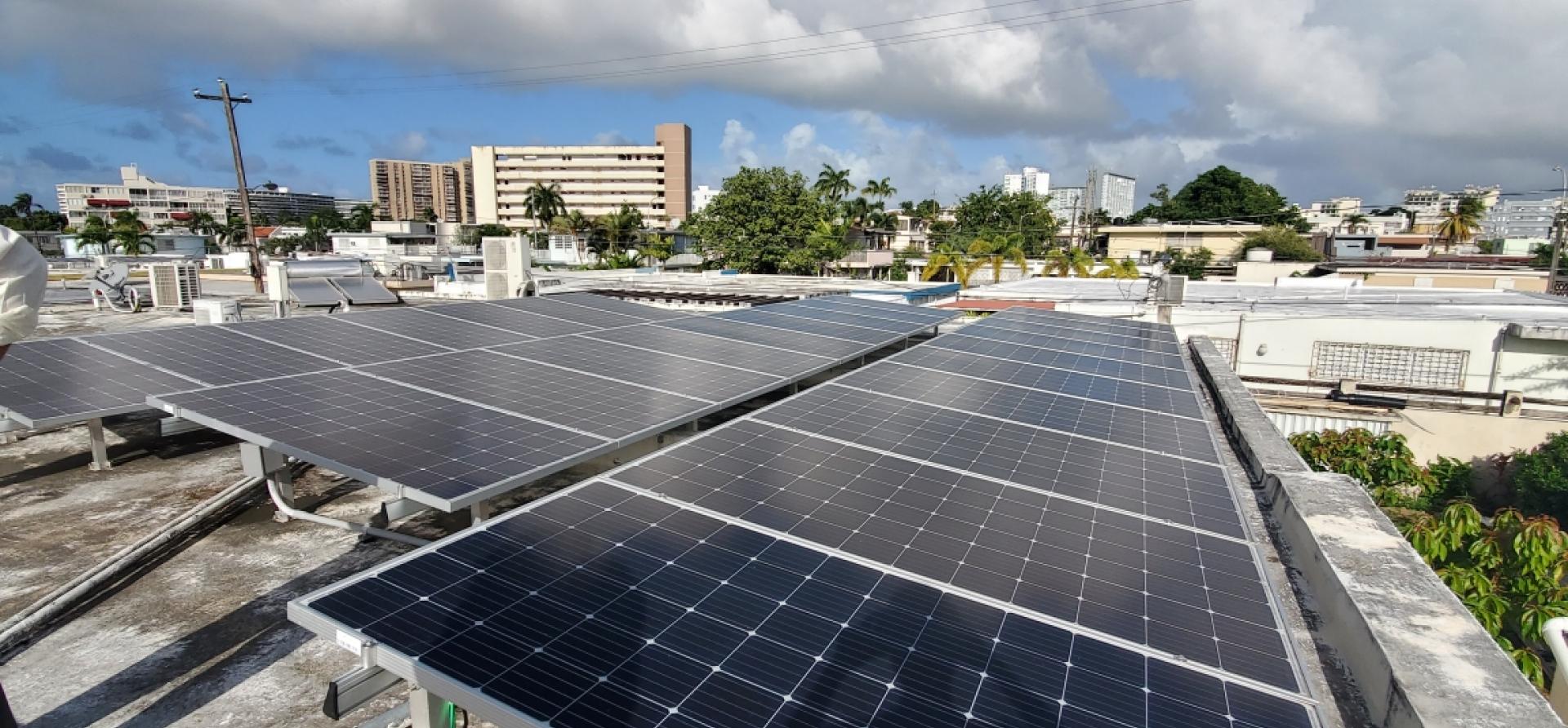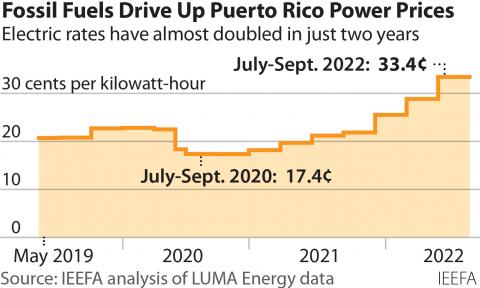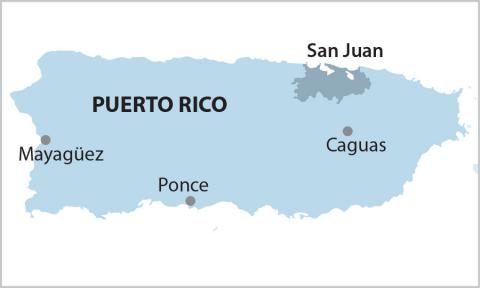Five years after Hurricane Maria, progress is being made by people—not institutions

Key Findings
Five years after Hurricane Maria devastated the Puerto Rico grid, 40,000 families have taken it upon themselves to install solar panels.
The government has produced no new renewable energy and no debt deal to end bankruptcy.
Puerto Rico hired a private company to run the electricity system; it is failing.
Rates are 30 cents per kilowatt-hour but goal is 20 cents.
September 20 marks the fifth anniversary of Hurricane Maria, which left parts of Puerto Rico without power for as long as a year and resulted in more than 4,000 deaths. The disaster resulted in many promises for the transformation of Puerto Rico’s bankrupt, poorly maintained and fossil fuel-dependent power grid. Five years later, the people of Puerto Rico are proving far more resilient than institutions that have failed to meet even a minimum standard of improvement.
The largest transformation has come from personal initiatives. Households have installed more than 250 megawatts (MW) of distributed rooftop solar since September 2017. More than 40,000 households have decided to protect their homes and families by paying to install rooftop solar panels. The vast majority of systems have been installed with battery storage to provide resiliency during grid outages. They are being installed without federal subsidies, since Puerto Rico residents are ineligible for a federal income tax credit available on the mainland.
The grid-connected rooftop solar systems on the island are currently providing 3.7% of the island’s electricity consumption, more than utility-scale projects. Despite the widespread public support for renewable energy—particularly for rooftop solar—the government response has been contradictory and ineffective. There’s consideration being given by private grid operator LUMA Energy and the federal Financial Oversight Management Board in this year’s fiscal plan to weaken the net metering incentive. An integrated resource plan, approved by the Puerto Rico Energy Bureau in 2020 as a 20-year plan for the island’s power generation system, prioritizes the development of renewable energy and storage. However, no new utility-scale renewable energy projects have been built. Contracts signed in 2022 face controversy over the use of agricultural land for solar farms.
Meanwhile, the Puerto Rico government continues its misguided push for natural gas. The only major new centralized power generation project to be implemented since Hurricane Maria was the conversion of two units of the San Juan power plant to natural gas and the development of a liquefied natural gas (LNG) import terminal in the San Juan Bay by New Fortress Energy (NFE).
The NFE project has been plagued with problems, including the unfair advantage given to NFE when the contract was awarded, the illegal construction of the terminal without Federal Energy Regulatory Commission approval, and New Fortress’s failure to deliver gas to the plant for several months last winter. Even so, the push for natural gas continues.
The Puerto Rico government continues its misguided push for natural gas
The president of the island’s energy bureau published a July op-ed acknowledging there is no longer an economic case to be made for natural gas as a “bridge fuel” to renewable energy, and the appropriate course is to invest in renewable energy and storage. Yet in August, the bureau issued an order calling for proposals for a 300-MW natural gas plant—even as high prices for imported fossil fuels have pushed electricity rates over 30 cents per kilowatt-hour this year, a full dime above the targeted rate.
The grid privatization initiative announced in January 2018 as the centerpiece of the Puerto Rico government’s response to the grid failure in the wake of Hurricane Maria has not met its objectives of lowering costs or transforming the system. Privatizing the grid was meant to depoliticize the electrical system. But the combination of unaffordable rates and extremely unreliable service has resulted even in some of privatization’s biggest supporters like Rep. Jenniffer Gonzalez and Gov. Pedro Pierluisi expressing frustration. With billions of dollars of available federal funding, there is a high risk that the money will be poorly administered and improperly spent.
Five years after Hurricane Maria, the electrical system appears to be no closer to emerging from bankruptcy. LUMA Energy and the Puerto Rico Electric Power Authority disagree publicly over major issues. They have failed to make progress on reducing prices, improving the dismal track record of implementing savings initiatives, and producing a better budget. Service delivery has been noticeably worse, and the various financial and accounting problems that led up to the bankruptcy remain largely in place.
It is widely accepted that the surest path to lowering rates and stabilizing the finances of the electrical system is to end Puerto Rico’s dependence on fossil fuels. The people of the island—at least, those who can afford it—are voting with their feet to move in that direction. It is past time for the federal government and the island government to stand up to fossil fuel and bondholder interests and put the billions of dollars of grid reconstruction money towards rebuilding a resilient, decentralized, renewable energy-based grid.
Tom Sanzillo ([email protected]) is IEEFA director of financial analysis

















